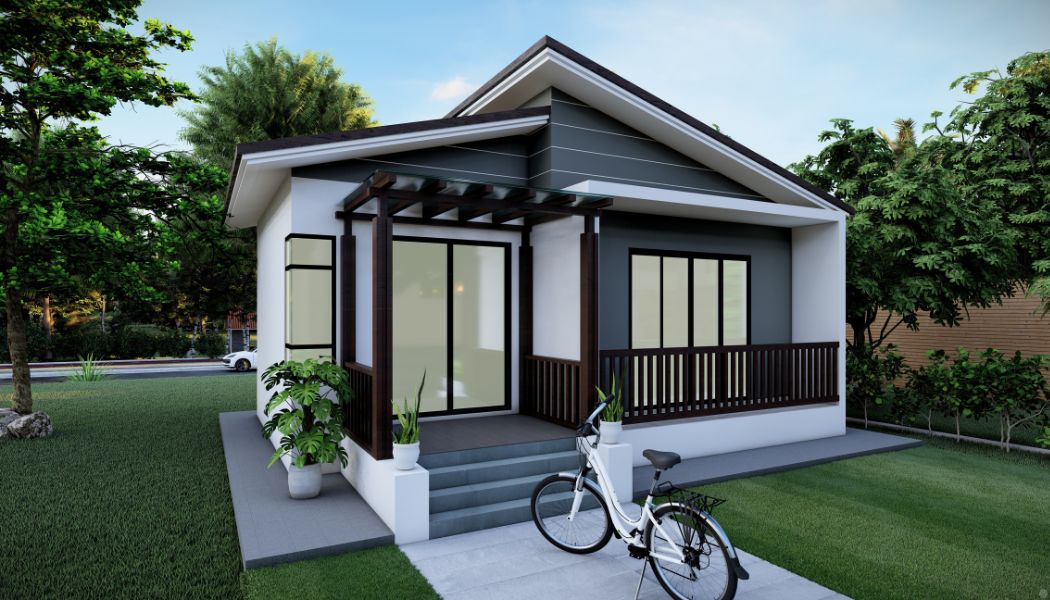Exploring Benefits, Affordability and Sustainability
As housing markets around the world continue to evolve, more people are turning to innovative housing solutions that promise efficiency, sustainability and affordability. Prefabricated, or prefab, homes have gained significant attention as a potential solution to meet growing housing demands. In this article, we explore what prefab homes are, their benefits, highlight their affordability and why they should be considered.
What is a Prefab Home?
A prefab home is a residential structure built off-site in a controlled factory environment, then transported and assembled at the final location. Unlike traditional on-site construction, which is frequently subject to weather delays and material waste, prefab homes are engineered with precision in mind, offering a streamlined process from design to installation.
They come in a variety of designs from modular units that can be combined in multiple ways to panelized building systems where entire wall sections are pre-built and later assembled on-site, thus offering choices that cater to different tastes and needs.
Benefits of Prefab Homes
Here are some advantages prefab homes have over traditional ones.
Speed of Construction
One of the primary advantages of a prefab home is speed. In a controlled factory setting, construction can proceed regardless of weather conditions or on-site complications. This can drastically reduce the overall build time compared to conventional methods, allowing homeowners to move in sooner.
Quality Control
Building in a factory allows for a more stringent and consistent quality control process. Automated machinery, standardized processes and specialized labor contribute to the creation of higher quality building components. Since the construction takes place indoors, issues related to dirt, moisture or inconsistent materials handling are minimized, resulting in a structure that often exceeds standard building expectations.
Related Search Topics (Ads)
Sustainability
Prefab homes often boast a greener construction process. With the ability to plan and optimize material usage, there is typically far less waste produced as compared to traditional construction sites. Additionally, many prefab manufacturers use sustainable, recycled or eco-friendly materials, reducing the environmental impact even further. Coupled with energy-efficient designs and modern insulation techniques, prefab homes can lead to lower energy consumption and a smaller carbon footprint over their lifetime.
Customization and Flexibility
While some might assume that prefab homes are "cookie-cutter" designs, modern prefab construction offers extensive customization. Homeowners can choose from a variety of floor plans, finishes and layouts to suit their lifestyle or creative vision. Modular designs also enable the easy expansion of homes over time, allowing the structure to adapt to changing family sizes or needs without a complete overhaul.
Safety and Durability
Prefab homes are built with strict adherence to building codes and often exceed them thanks to the precision of factory-based construction. Many prefab structures are designed to better withstand environmental challenges, from earthquakes to high winds.
Prefab Homes as Affordable Options
The affordability of prefab homes is perhaps one of the most compelling factors driving their popularity. Here are some points that illustrate their cost benefits.
Reduced Labor Costs
Since a significant portion of the construction takes place in a factory setting, labor costs are generally lower. The efficiency of assembly-line production means that fewer skilled labor hours are required, which can reduce overall costs significantly without sacrificing quality.
Minimal Waste and Efficient Material Use
Factory production often means materials are used more efficiently, leading to reduced waste and lower material costs. Builders can plan the layout of every piece meticulously, ensuring that each component is optimized for the best fit with minimal excess. This efficiency translates directly into lower construction expenses, passing savings on to homeowners.
Faster Construction Time Equals Lower Interest Costs
With the accelerated construction process of prefab homes, homeowners often face shorter financing periods. Less time waiting for construction means reduced interest expenses and other financial costs that accumulate during long building processes. In this way, the quick construction cycle can yield appreciable economic benefits.
Why Prefab Homes Should be Considered
Prefab homes deserve serious consideration for several reasons. As cities grapple with housing shortages and affordability crises, prefab homes provide a solution that harmonizes speed, quality and cost-effectiveness. They represent a leap forward in construction technology, offering modern features and customized designs without the long wait of traditional builds. Beyond the personal benefits, prefab homes have the potential to positively impact urban planning and community development by reducing construction waste and the environmental toll common to conventional building methods.
Moreover, prefab homes open up housing opportunities for diverse populations, ranging from first-time homeowners seeking smaller, more affordable options to retirees downsizing, without sacrificing quality. The versatility of design ensures that prefab homes can be adapted to different climates, lifestyles and aesthetic preferences, making them not just a niche product but a widely applicable solution for modern residential needs.
Final Notes
Prefab homes are emerging as a promising alternative in the ever-evolving housing landscape. As advancements continue, and more people recognize their unique advantages, prefab homes are set to play a pivotal role in addressing housing challenges in the coming decades.
Keep reading to learn how to determine your property's worth.

